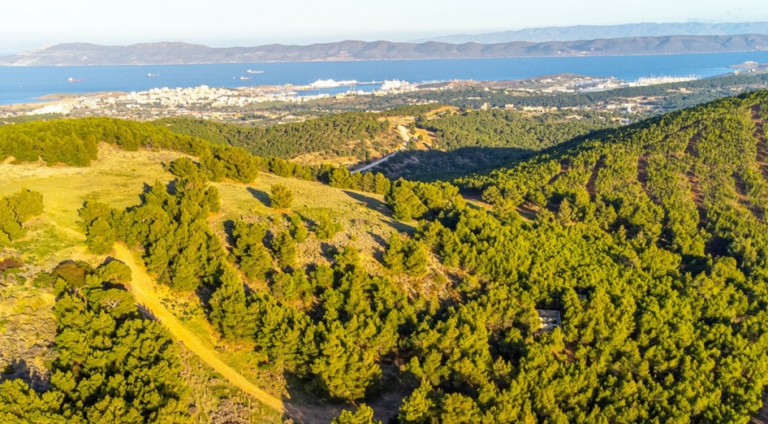Attica is a place full of that Mediterranean tranquility and the profundity of its light, blessed by the fairy of History through the centuries, found itself, within a few decades, to have lost its identity. Places of astonishing beauty like Mount Parnitha, the Mesogeia, the haute couture elegance of the Coastline (the “Athenian Riviera”), though, succumbed to a fast-forward aesthetic and social distortion that forever changed the profile, perhaps, of the most prominent region of our country.
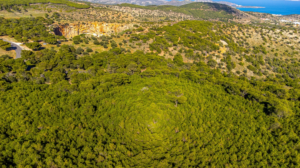
However, there are small pockets of resistance, small miracles of endurance, which, no matter how much their magic shrinks and is menacingly encircled by “new land uses” and “developmental redesigns,” persist in reminding us that Attica’s land has been, through the ages, the most marvelous workshop of human destiny. One such hub of resistance is the forest in the low mountains between Lavrio and Sounion. A small “Pocket National Park,” an escape through the neighboring door to a place where nature and history blend in an indissoluble way.
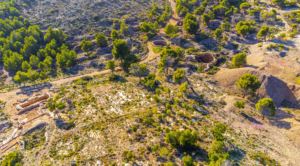
The National Park of Sounion is the smallest and youngest in our country. It was declared a park in 1974 and covers a total area of 35,000 acres, of which approximately 5,500 are the core of the park and are part of the Natura 2000 network. It is an area of exceptional natural beauty, with the dominant species being the pine forest, also holding the title of the largest and best-preserved pine forest in Eastern Attica. Within it, one can find over 400 species of flora, several birds, and numerous wild animals (mainly foxes, hares, and others).
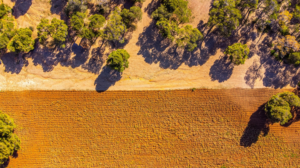
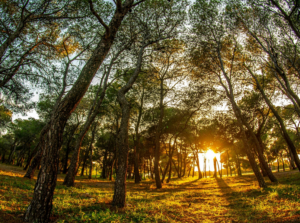
Following the fate of the other forests in Attica, it too fell victim to fire in 1985, which destroyed a large part of it. Almost 40 years later, and having allowed nature to quietly do its job, the forest is teeming with life again, with new trees and a vigorous disposition to return to its glory days (although it will take many more years). Nevertheless, it serves as an optimistic note of regeneration, bringing a hopeful message to everyone that natural processes, combined with proper human practices, can minimize the impacts of a disaster.
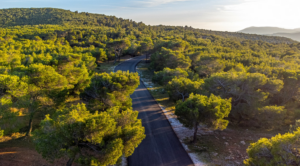
Laureotic Land
The National Park of Lavrion is not only known for its natural flora, but also for its significant historical presence in the lives of Greeks from ancient times to modern. The land rich in minerals of Lavrion was a blessing for centuries, which ended up, in the known modern Greek way, as a curse, with the widespread social and economic turmoil in the late 19th century. This tumultuous journey of the forest of Lavrion, which begins around 3000 BC, is still evident today, as the lush greenery interrupted here and there by deep holes in the ground, signs of an era when mining made Lavrion something like Greece’s mythical Eldorado.
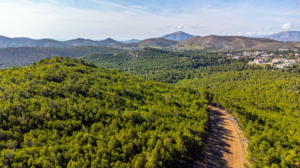
You can reach the forest in less than an hour from Athens, either from the Lavrion side or from the Anavyssos side, setting Saint Constantine (or Kamariza) as your starting point. From there, the first stop – and for many, the only one – is at the first section of the forest, where there are benches and tables for picnics and relaxation. There lies the ultimate highlight of the National Park, a large sinkhole, which bears the name “Chaos” or “Egkeilon Chaos,” which is its official name.
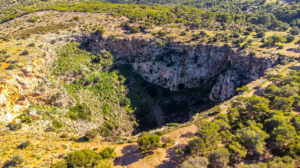
This is an impressively sized crater with an opening of 120 meters and a depth of over 50 meters, which was likely formed by the collapse of the roof of an underground cave at least 2 million years ago. There are, of course, rumors about its creation by a meteorite impact, but they probably do not correspond to reality. Previously, there was the possibility for the adventurous to descend to its base, but for years now, a wire mesh has been installed around it to prevent accidents. In any case, the “Chaos” is one of the most impressive geological phenomena in all of Greece and for that reason alone, it is worth a visit to the forest of Lavrion.
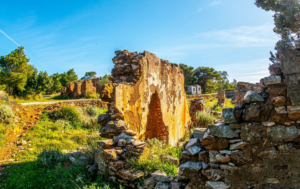
The surrounding area is pleasantly landscaped for endless hours of family play, as long as one avoids holidays when a lot of people gather seeking alternatives to avoid the crowds of the beach and the hassle – and cost – of a sea bath. The recently paved road continues through the forest for several kilometers, offering a particularly enjoyable journey, with views sometimes towards Lavrion and sometimes towards the other side of Athens-Sounio, towards the island of Patroklos. At the end, it intersects with the road that connects Lavrion to Sounio, where everyone decides on the way back to Athens.
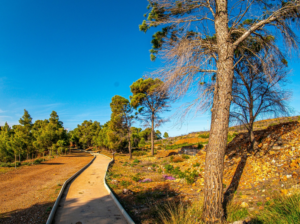
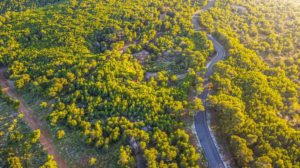
Throughout this route, there are dirt roads on both the right and left, some easily passable and others with the hard stone of the area, which invite exploration (preferably with an SUV and careful driving to avoid tire punctures). Small in size, easy to access, and with nature overflowing with the youthful optimism of the rejuvenated pines, the forest above Lavrion invites Athenians to remind them how Attica could be without the discounting ethos of modern Athenian perception. A forest that managed to survive through the catastrophic fire and the sufferings of its precious minerals, once again bears the heavy burden of convincing everyone that nothing is lost forever. And that it is possible to have a virgin forest within breathing distance from Athens. All it takes is to listen to the rustling of the pines and gaze at the shimmer of the Saronic to believe that deep down, Attica remains a place of evolving magic.
See Also:
Chemotherapy brain fog cleared with simple light and sound treatment
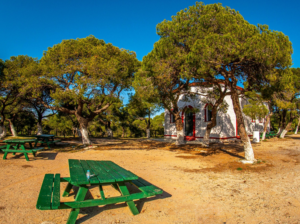
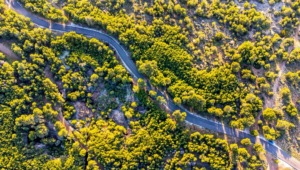
Tips
- – Follow the regulations of the National Park as displayed on signs throughout the forest. Camping of any kind (trailers, tents, etc.), damaging geological formations, and using roads for car and motorcycle tests or races are strictly prohibited. Also, refrain from creating excessive noise or playing music that disturbs others and disrupts the landscape.
- – All activities involving fire are prohibited, especially during the hot months.
- – Avoid leaving scattered litter in the forest. It’s disheartening to see trash left behind, especially during outdoor festivals, and it increases the risk of fires.
- – During summer, engage in activities early in the morning to avoid the heat. The forest offers numerous hiking and biking opportunities, but be cautious around old mining pits and caves, especially if accompanying children.
- – There are trails suitable for all ages and fitness levels. A recommended route is the asphalt road between Chaos and Agia Marina and back. In the area of Agia Triada, paths lead to ancient silver mines, including a well-maintained trail of about 500 meters for individuals with special needs. More adventurous visitors can explore longer routes, approximately 1,600 meters.
- – For dining options, which can be combined with swimming during summer, there are plenty of seaside establishments from Lavrio to Palaiá Phokaia to cater to everyone. However, we highly recommend picnicking as the ideal choice.
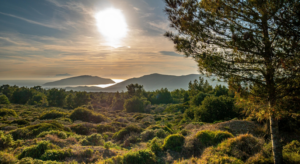
Ask me anything
Explore related questions


